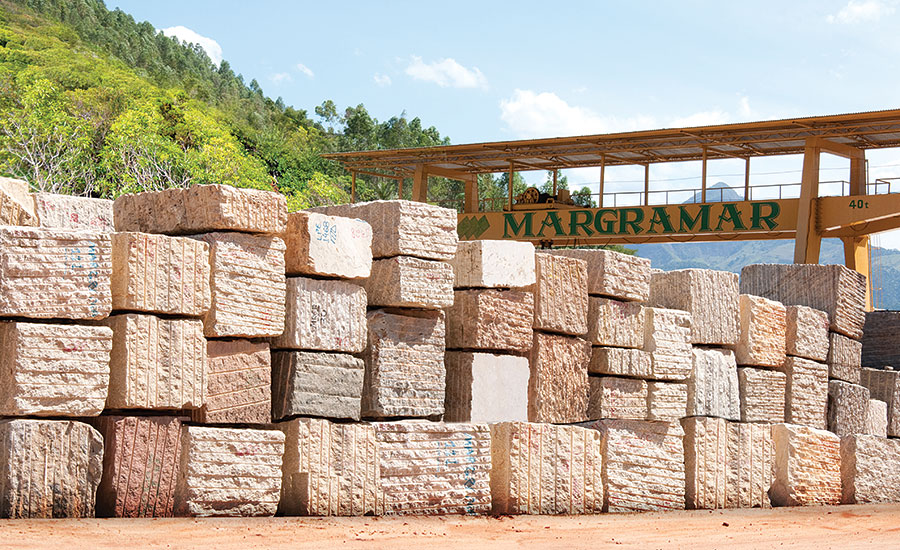Finding the Charm of Granite Quarry in South Africa Wonders
Finding the Charm of Granite Quarry in South Africa Wonders
Blog Article
Introducing the Mysteries of Granite Quarrying: Where Stamina and Sophistication Meet
The globe of granite quarrying is a realm where the raw stamina of nature merges with human artistry to produce structures that stand the examination of time with an air of sophistication. From the midsts of quarries to the meticulous polishing in workshops, the procedure of transforming granite into architectural marvels is an intricate dancing of custom and development. As we peer into the depths of this ancient craft, we start to discover the concealed ins and outs that form the extremely essence of our built environment.
The Origins of Granite Quarrying
In the annals of building background, the beginnings of granite quarrying are shrouded in a tapestry of ancient craftsmanship and geological marvels. Going back to ancient Egypt and Mesopotamia, the extraction of granite from quarries noted the start of a journey that would ultimately lead to the creation of several of the globe's most famous structures.
Granite quarrying's roots can be mapped to the experienced craftsmens who recognized the rock's durability and visual charm. Through a mix of primitive tools and large resolution, these early quarry employees discovered granite blocks that would come to be the building blocks of civilizations.
As human beings developed, so did the strategies of quarrying granite. The Romans, renowned for their design prowess, developed innovative methods for removing granite to build monuments, holy places, and roads that stood the examination of time.
The legacy of these old quarrying practices remains to form modern architecture, with granite remaining a sign of toughness and beauty in construction projects around the globe. (granite quarries in south africa)
Devices of the Quarrying Profession
The evolution of granite quarrying methods from old human beings to modern times highlights the critical role played by the tools of the quarrying profession in forming the sector's techniques. In old times, quarrying devices were basic, commonly containing knives, hammers, and wedges made from products like bronze or iron. These devices called for substantial workforce and time to remove granite obstructs from quarries.

Furthermore, the intro of pneumatic devices and high-powered machinery has actually significantly minimized the physical labor required in quarrying operations, improving employee safety and security and efficiency. As the quarrying sector continues to introduce, the devices of the trade stay at the center of driving progression and shaping the future of granite extraction.
Drawing Out Blocks of Granite
Utilizing precision equipment and progressed techniques, the extraction of granite obstructs from quarries has ended up being a sophisticated procedure in the modern-day quarrying market. Controlled blowing up methods are then utilized to damage apart the granite into workable areas.

Sprucing Up and Completing Strategies
To achieve a perfect surface area on granite blocks, competent craftsmens use a collection of meticulous polishing and completing techniques. After the initial removal and forming procedures, the granite obstructs undertake a comprehensive Web Site polishing stage to boost their all-natural beauty and resilience. One typical technique utilized in polishing granite is diamond abrasion, where industrial diamonds are used to grind and brighten the rock to a smooth surface. This process not only creates a lustrous surface area yet additionally makes certain harmony in color and texture throughout the granite block.
Along with sprucing up, completing strategies are applied to more refine the granite's look. These techniques might include flaming, refining, or brushing, each offering special textures and surfaces to suit different visual choices. Flaming, for example, includes revealing the dig this granite surface to high temperature levels to create a rough, textured coating, perfect for outside applications where slip-resistance is crucial. Developing, on the various other hand, provides a matte surface that is smooth to the touch, excellent for interior countertops and flooring. By meticulously picking and applying these polishing and completing methods, craftsmens can change raw granite obstructs right into exquisite pieces that showcase both strength and beauty.

Ecological Impact and Sustainability
With the expanding emphasis on environmental awareness in the sector, granite quarrying methods are significantly scrutinized for their effect on natural deposits and lasting sustainability. Quarrying for granite can have substantial environmental ramifications. The removal procedure typically entails the usage of heavy machinery, dynamites, and huge quantities of water, leading to habitat destruction, soil erosion, and water contamination. In addition, the transport of granite from quarries to refining centers creates carbon exhausts, further contributing to environmental degradation. granite quarries in south africa.
To alleviate these effects and guarantee sustainability in granite quarrying, industry stakeholders are taking on different steps. Executing advanced modern technologies to minimize energy intake and water usage, redeeming quarried land for environmental remediation, and advertising accountable sourcing practices are some methods being employed. In addition, accreditations such as the Woodland Stewardship Council (FSC) these details and the Leadership in Power and Environmental Design (LEED) aid consumers recognize eco-friendly granite items.
Conclusion
Finally, granite quarrying is a process that requires specialized devices and strategies to remove blocks of granite and brighten them to a high level of surface. While the environmental impact of quarrying can be significant, initiatives are being made to enhance sustainability methods in the industry. Overall, granite quarrying is a delicate equilibrium between taking advantage of the strength and elegance of this all-natural rock while lessening its effect on the environment.
Report this page